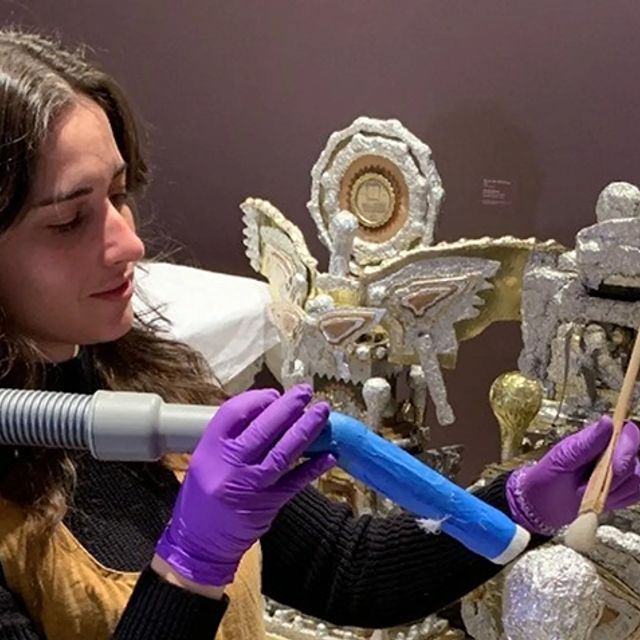Artwork Details
- Title
- Ten Original Clans of the Myaamia
- Artist
- Date
- 2016
- Location
- Not on view
- Dimensions
- overall_1: 41 3⁄4 in. × 22 in. × 3 1⁄2 in. (106 × 55.9 × 8.9 cm) [variable]
- Copyright
- © 2016, Katrina Mitten
- Credit Line
- Museum purchase through the Kenneth R. Trapp Acquisition Fund
- Mediums Description
- wool felt with Czech seed beads, pony beads, brass thimbles, polyester tassels, satin ribbon, and cotton liner
- Classifications
- Highlights
- Keywords
- Indian
- Object Number
- 2021.3
Artwork Description
Katrina Mitten’s beaded bandolier bag depicts the ten original clans of the Miami tribe (called “Myaamia” by its citizens): Golden Eagle, Turkey, Wolf, Loon, Raccoon, Panther, Vulture, Sun, Snow, and Water. The white diamond-and-circle pattern surrounding the pouch references a popular Miami style from the 1830s.
Bandolier bags originated in the nineteenth century with European infantry soldiers, who wore them to carry cartridges at their hips. Native women from tribes in the Great Lakes region began making highly detailed, beaded versions of these bags to be traded and worn by men on ceremonial occasions. Mitten’s contemporary adaptation demonstrates the resilience of the Miami Tribe, showing how, as the artist says, “the Myaamia are a people who are still connected to our history, traditions, and culture.”













